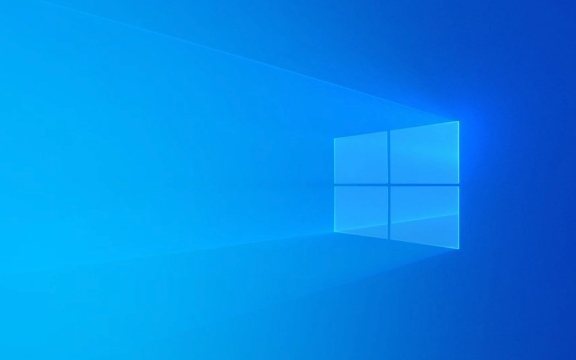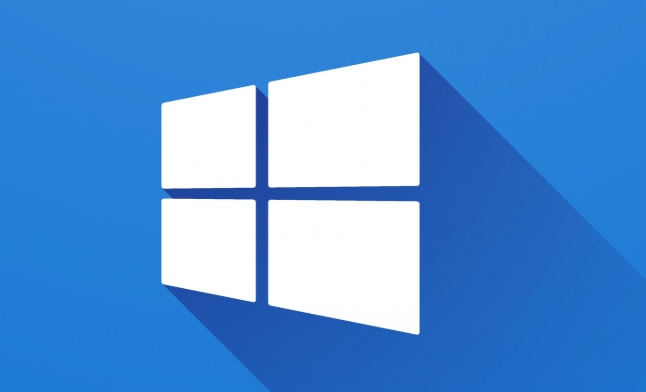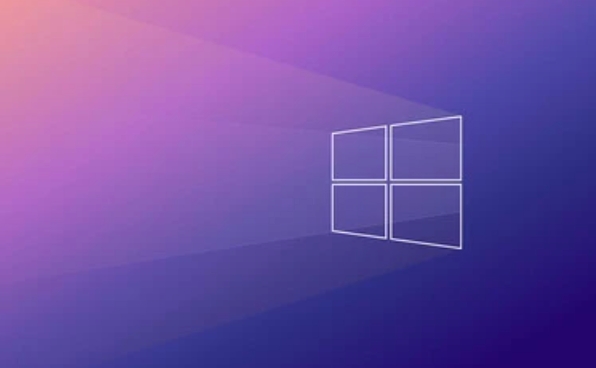1. Make sure Remote Desktop is enabled: Enable Remote Desktop feature on the target computer and confirm that the user account has permission to access. 2. Check network and firewall settings: Make sure the device is on the same network, try ping tests, and allow remote desktops to pass through the firewall. 3. Use the correct IP address and port: Enter the correct IP address and port number (default 3389), pay attention to distinguishing between public IP, LAN IP and IPv4/IPv6. 4. Troubleshoot advanced problems: Check whether the remote desktop service is running, whether there are group policy restrictions, try to create a new .rdp file and update the Windows system. If you still cannot connect, please check whether there are any errors in each step.

If you're trying to connect via Remote Desktop on Windows and it's not working, there are a few common issues that could be causing the problem. It might be something simple like network settings or firewall rules — or maybe the remote computer isn't configured correctly for remote access.

Let's go through the most likely causes and how to fix them.

1. Make Sure Remote Desktop Is Enabled
First things first — is Remote Desktop actually turned on?
- On the computer you're trying to connect to , go to Settings > System > Remote Desktop .
- Toggle it on.
- You should see a message saying "Remote Desktop is enabled for this device."
If you don't see that message, click the link under “How to enable Remote Desktop” or make sure your version of Windows supports it (not all versions do — Home editions usually don't).

Also, check that the user account you're using has permission to connect:
- Go to Control Panel > System > Remote Settings
- Under the Remote tab, make sure the option “Allow remote connections to this computer” is selected
- Check the list under “Remote Desktop Users” to confirm your account is included
2. Check Network and Firewall Settings
Even if Remote Desktop is enabled, firewalls or network settings can block the connection.
- Make sure both devices are on the same network — especially if you're testing locally.
- Try pinging the remote machine by its IP address to see if it's reachable:
ping [IP Address]
If it doesn't respond, there's a network issue before even getting to RDP.
Firewall-related fixes:
- On the remote PC, open Control Panel > Windows Defender Firewall > Allowed apps , and make sure Remote Desktop is checked for both private and public networks.
- Or temporarily disable the firewall (for testing only!) to see if that resolves the issue.
You can also try allowing Remote Desktop through the command line:
netsh advfirewall firewall set rule group="remote desktop" new enable=Yes
3. Use the Correct IP Address and Port
This one trips people up more than you'd think.
When connecting:
- Open Remote Desktop Connection (
mstsc) - Enter the correct IP address of the remote machine
- If connecting over the internet or through a custom setup, make sure you're using the right port number (default is 3389)
Common mistakes:
- Using the wrong IP address (like the public IP when you meant to use local)
- Forgetting port forwarding on your router if connecting from outside the local network
- Confusing IPv4 and IPv6 addresses
If you're unsure what IP to use:
- On the remote machine, run
ipconfigin Command Prompt and look for IPv4 Address
4. Troubleshoot Advanced Issues
Sometimes the problem is deeper than basic settings.
Check these if everything else seems OK:
Remote Desktop service is running :
PressWin R, typeservices.msc, find Remote Desktop Services , and make sure it's running.Group Policy restrictions :
If you're on a managed network or domain, IT policies might block Remote Desktop. This is common in work environments.Corrupted RDP files or profiles :
Try deleting saved.rdpfiles or creating a new one from scratch.Update Windows :
Occasionally, an outdated system can cause compatibility issues with RDP. Run Windows Update just in case.
If you've gone through these steps and still can't connect, double-check each setting — sometimes a small misstep like a typo in the IP address or a forgetten firewall rule is all it takes.
Basically that's it.
The above is the detailed content of Windows remote desktop can't connect. For more information, please follow other related articles on the PHP Chinese website!

Hot AI Tools

Undress AI Tool
Undress images for free

Undresser.AI Undress
AI-powered app for creating realistic nude photos

AI Clothes Remover
Online AI tool for removing clothes from photos.

Clothoff.io
AI clothes remover

Video Face Swap
Swap faces in any video effortlessly with our completely free AI face swap tool!

Hot Article

Hot Tools

Notepad++7.3.1
Easy-to-use and free code editor

SublimeText3 Chinese version
Chinese version, very easy to use

Zend Studio 13.0.1
Powerful PHP integrated development environment

Dreamweaver CS6
Visual web development tools

SublimeText3 Mac version
God-level code editing software (SublimeText3)
 Windows Security is blank or not showing options
Jul 07, 2025 am 02:40 AM
Windows Security is blank or not showing options
Jul 07, 2025 am 02:40 AM
When the Windows Security Center is blank or the function is missing, you can follow the following steps to check: 1. Confirm whether the system version supports full functions, some functions of the Home Edition are limited, and the Professional Edition and above are more complete; 2. Restart the SecurityHealthService service to ensure that its startup type is set to automatic; 3. Check and uninstall third-party security software that may conflict; 4. Run the sfc/scannow and DISM commands to repair system files; 5. Try to reset or reinstall the Windows Security Center application, and contact Microsoft support if necessary.
 Proven Ways for Microsoft Teams Error 657rx in Windows 11/10
Jul 07, 2025 pm 12:25 PM
Proven Ways for Microsoft Teams Error 657rx in Windows 11/10
Jul 07, 2025 pm 12:25 PM
Encountering something went wrong 657rx can be frustrating when you log in to Microsoft Teams or Outlook. In this article on MiniTool, we will explore how to fix the Outlook/Microsoft Teams error 657rx so you can get your workflow back on track.Quick
 The RPC server is unavailable Windows
Jul 06, 2025 am 12:07 AM
The RPC server is unavailable Windows
Jul 06, 2025 am 12:07 AM
When encountering the "RPCserverisunavailable" problem, first confirm whether it is a local service exception or a network configuration problem. 1. Check and start the RPC service to ensure that its startup type is automatic. If it cannot be started, check the event log; 2. Check the network connection and firewall settings, test the firewall to turn off the firewall, check DNS resolution and network connectivity; 3. Run the sfc/scannow and DISM commands to repair the system files; 4. Check the group policy and domain controller status in the domain environment, and contact the IT department to assist in the processing. Gradually check it in sequence to locate and solve the problem.
 the default gateway is not available Windows
Jul 08, 2025 am 02:21 AM
the default gateway is not available Windows
Jul 08, 2025 am 02:21 AM
When you encounter the "DefaultGatewayisNotAvailable" prompt, it means that the computer cannot connect to the router or does not obtain the network address correctly. 1. First, restart the router and computer, wait for the router to fully start before trying to connect; 2. Check whether the IP address is set to automatically obtain, enter the network attribute to ensure that "Automatically obtain IP address" and "Automatically obtain DNS server address" are selected; 3. Run ipconfig/release and ipconfig/renew through the command prompt to release and re-acquire the IP address, and execute the netsh command to reset the network components if necessary; 4. Check the wireless network card driver, update or reinstall the driver to ensure that it works normally.
 How to fix 'SYSTEM_SERVICE_EXCEPTION' stop code in Windows
Jul 09, 2025 am 02:56 AM
How to fix 'SYSTEM_SERVICE_EXCEPTION' stop code in Windows
Jul 09, 2025 am 02:56 AM
When encountering the "SYSTEM_SERVICE_EXCEPTION" blue screen error, you do not need to reinstall the system or replace the hardware immediately. You can follow the following steps to check: 1. Update or roll back hardware drivers such as graphics cards, especially recently updated drivers; 2. Uninstall third-party antivirus software or system tools, and use WindowsDefender or well-known brand products to replace them; 3. Run sfc/scannow and DISM commands as administrator to repair system files; 4. Check memory problems, restore the default frequency and re-plug and unplug the memory stick, and use Windows memory diagnostic tools to detect. In most cases, the driver and software problems can be solved first.
 Windows 11 KB5062660 24H2 out with features, direct download links for offline installer (.msu)
Jul 23, 2025 am 09:43 AM
Windows 11 KB5062660 24H2 out with features, direct download links for offline installer (.msu)
Jul 23, 2025 am 09:43 AM
Windows 11 KB5062660 is now rolling out as an optional update for Windows 11 24H2 with a few new features, including Recall AI in Europe. This patch is available via Windows Update, but Microsoft has also posted direct download l
 Windows could not start because the following file is missing or corrupt
Jul 07, 2025 am 02:39 AM
Windows could not start because the following file is missing or corrupt
Jul 07, 2025 am 02:39 AM
When the boot prompt is "Windows could not start because of the following fileismissing" 1. You can run bootrec/fixmb, bootrec/fixboot, bootrec/rebuildbcd through the Windows installation media; 2. Check the hard disk connection or use CrystalDiskInfo to detect the health status of the hard disk; 3. If there is a dual system, you can use the bootrec command to rebuild the boot or manually add the boot items; 4. Use PE environment to kill viruses and combine DISM and SFC tools to repair the system files, and the system can be restored in most cases.
 My second monitor is not detected on Windows
Jul 08, 2025 am 02:47 AM
My second monitor is not detected on Windows
Jul 08, 2025 am 02:47 AM
If the second monitor is not recognized by Windows, first check whether the cable and interface are normal, try to replace the HDMI, DP or VGA cable, confirm the plug-in video output port, and test different interfaces to eliminate compatibility issues; then verify the monitor power and input source settings, and connect the monitor separately to test whether it can be recognized; then enter the Windows display settings and click the "Detection" button, or use Win P to switch the display mode, and update the graphics card driver at the same time; finally check the graphics card specifications to confirm whether it supports multi-screen output to avoid exceeding its maximum output capability.






